Intel NUC Case Competition Announcement
Well, we're absolutely gob smacked at the response to our Intel NUC competition. We've had nearly 40 submissions from modders all over the world with some absolutely amazing designs. However we're here today to announce the five winners who will go on to receive one of our Intel NUC kits so they can make their designs a reality.Just to re-cap our competition guidelines, we've chosen our final five based on two factors. The merit of the design is obviously key, but Intel and bit-tech were also looking for a solid grasp of dealing with tools and materials and evidence of your work to be in with a chance of completing your project in our tight time frame and to a high standard.
We hope those that didn't make it through aren't too disappointed - you came up with some cracking designs so keep your eyes on bit-tech in the future for other modding competitions. Without further ado, here are the final five modders who will soon have one of our NUC kits heading their way so they can go on to complete their project with all the gear.
The winners of stage 1 are:
1. Alex Banks (Maki role)
2. Craig Kendrick (Cheapskate)
3. Jeffrey Stephenson (Slipperyskip)
4. Luke Tedman (spO_oks)
5. Wayne Wilkinson (Waynio)
Congratulations to the lucky five - we'll hopefully be seeing some action from them in the forum soon. Finally, once again, a huge thanks to everyone that submitted designs. There was some great work on show and your support is much appreciated. We'll leave you with the final five designs and descriptions from their soon-to-be owners.
Alex Banks (Maki role)
I wanted to focus on the idea of having a media PC that you don't have to tuck away. The NUC is a great platform for this owing to its tiny dimensions and low power and cooling requirements. The design features two 'wing-like' side panels with a wooden middle section that will house all the mounting options. The side panels will be 3D printed, with a finish applied after by hand. The panels feature sleek vents that allow more than adequate airflow, with the main exhaust on the rear I/O panel. The wood will be finished with a satin varnish.
Click to enlarge
Click to enlarge
Craig Kendrick (Cheapskate)
My design for the NUC uses transparent brown plexiglass sandwiched between layers of opaque black plexiglas. This should make the case appear completely black when turned off. LEDs and strategic cuts inside will light up the transparent brown when the unit is powered on. There will be three main parts: The NUC, the base, and a 7in USB touchscreen. These three units are attached to a 2 1/2in diameter stainless steel pipe section that acts as a hinge.
Click to enlarge
Click to enlarge
I intend to leave the entire unit sanded evenly with 150 grit sandpaper. This will give it a more mechanical look, and I doubt I would be able to put my usual mirror polish on the case in the time provided. The size of the NUC is perfect for a small mill project. I will be able to cut all the parts in my CNC mill's 6 x 12 inch work area, which gives me more time for tuning the fit and finish.
The main NUC enclosure will be two solid parts connected by four screws. I plan to use 4-40 socket cap screws, most will be countersunk into the surface of the plastic. The NUC is pictured in pink and the USB and other inputs will be finalized if I receive a unit to take accurate measurements from.
Jeffrey Stephenson (Slipperyskip)
My entry is inspired by the streamline 'modern' locomotives of the 1930s. The name is French for fast forward. Avance Rapide's stance is meant to invoke the sense of forward motion with the promise of great speed.
The case cover for Avance Rapide is designed to be easily removed with no tools. This feature combined with the board's vertical orientation (with both sides exposed) assists in the showcasing of the project's components. The system is fully functional without the cover.
Click to enlarge
Click to enlarge
Materials include aircraft grade birch plywood, lacewood, dimensional hardwood lumber, and sheet aluminium. All of the work is to be done by myself.
Back panel ports are accessible through an aluminium I/O panel. The front USB port is hidden behind an easily removed chrome cover. The design includes dual external Wifi/Bluetooth antenna connectors.
Three large vents are designed into Avance Rapide. 57mm vent holes are located on each side. The right vent acts as the cooling blower fresh air intake. The third vent is located in the roof.
Luke Tedman
I started coming up with ideas as soon as I heard about this competition, my main thought was making it out of slices of material that would be joined together to make the case. The idea of making it a ball soon popped into my head and I hit the drawing board.
Click to enlarge
Click to enlarge
The case will be made from eight pieces of machined Acrylic separated by spacers and held together with bolts, the middle pieces will have a cavity cut out of them to house the components, and the front and rear faces will have holes for the inputs.
I've tried to keep it easy to use as well, so the board will be easily removable, making upgrading parts simple. I've designed the case with the thought of mass production in the back of my mind, so standard components will be used where possible, the design is also easily adaptable to the different layouts of the other NUC boards.
Wayne Wilkinson (Waynio)
To showcase the Intel NUC, this design shows it off from any angle. I've designed a passive heat sink with a mesh top for warm air to escape and the front/back, sides and top come off as one piece. I've also figured out an alternative to anodising over the past months which I'll be using in all my projects, I'll put up colour schemes in the log too to get peoples' opinions.
Click to enlarge
Click to enlarge
I revised my earlier design to use the stock fan & heat sink but modded with a transparent casing for it, added more mesh, detail & connecting points. I see I'm using a different NUC model but will be able to fully support the correct one with simple quick design tweaks if picked.
The design is to simply show it off from any angle in a nice case faintly larger than the original. So Intel NUC, acrylic case, super lightweight aluminium detail cover with roof vent & sturdy base coloured with my new finishing technique, lacqodising, a safe good looking alternative to dyed anodising for the average Joe.
Dimensions 128mm high with the 10mm alu plate, 120mm deep, 43mm wide.
Materials: Aluminium, acrylic, brass large mesh, steel fine mesh, metal lacquer & dyes, possibly copper if needed for the modded heat sink.

MSI MPG Velox 100R Chassis Review
October 14 2021 | 15:04



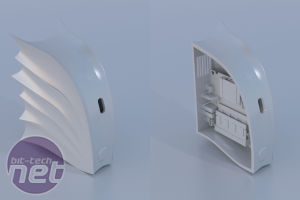
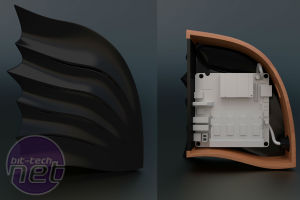
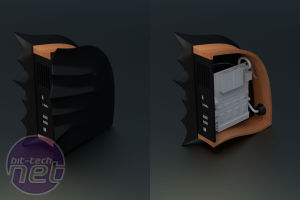

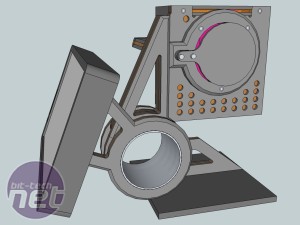


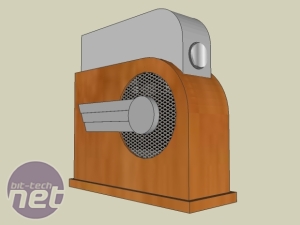

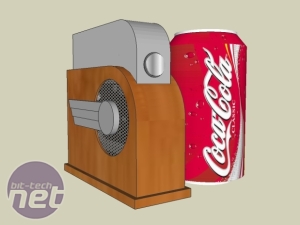
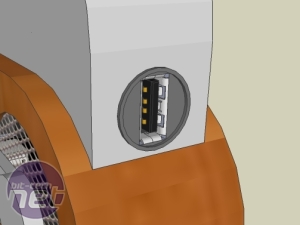
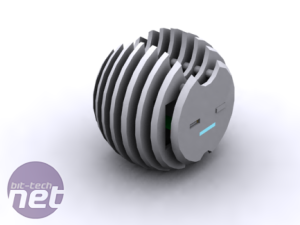
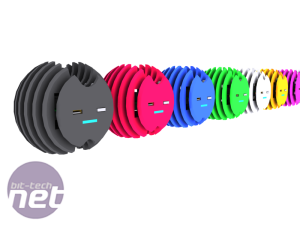
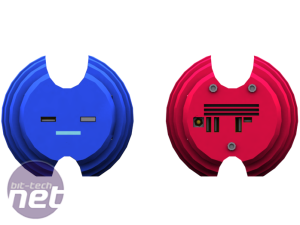
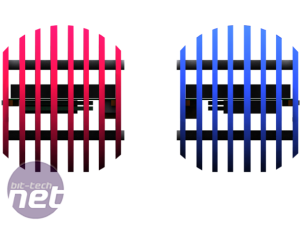
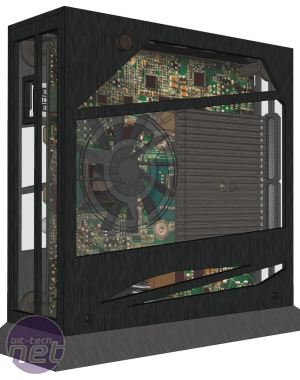
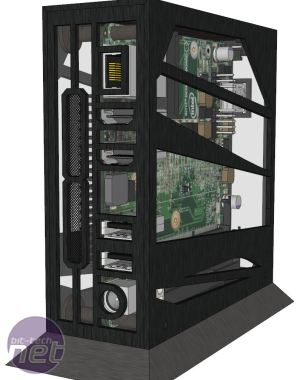
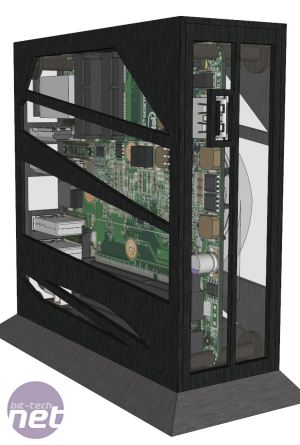
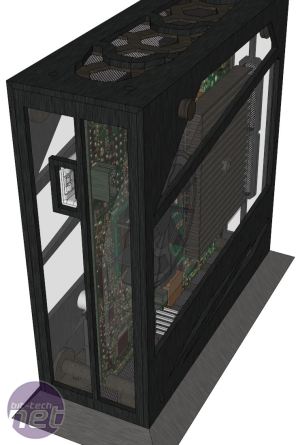







Want to comment? Please log in.